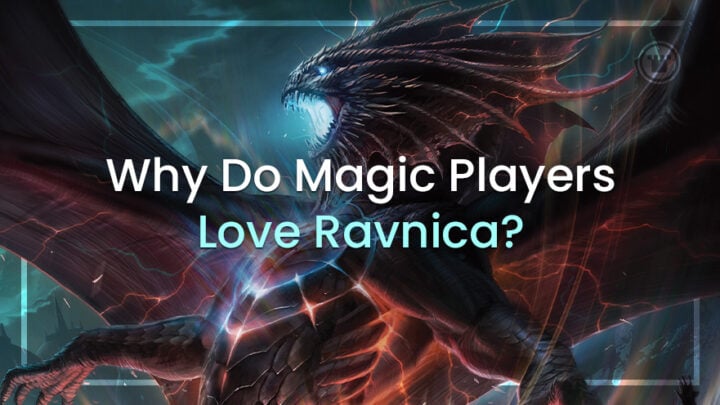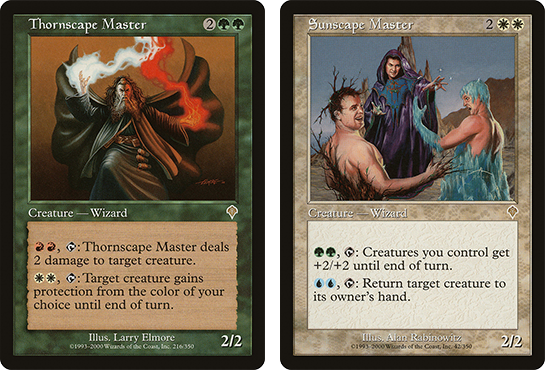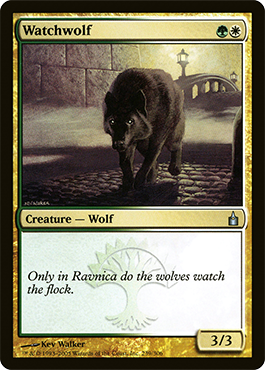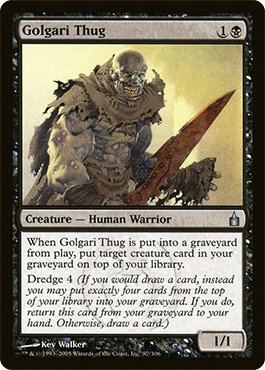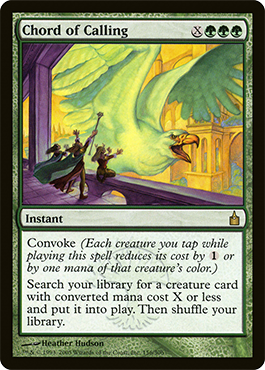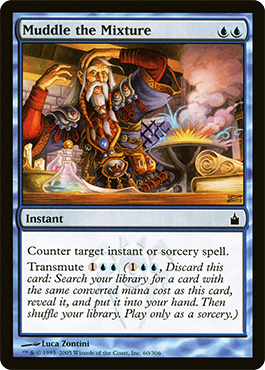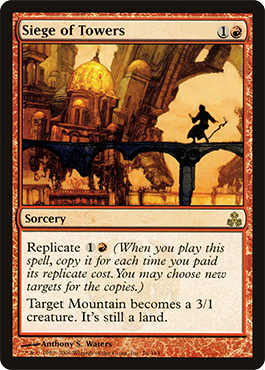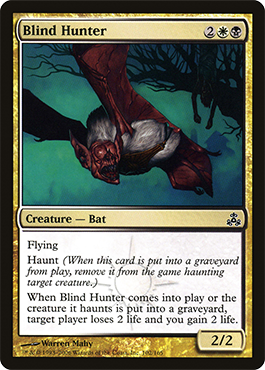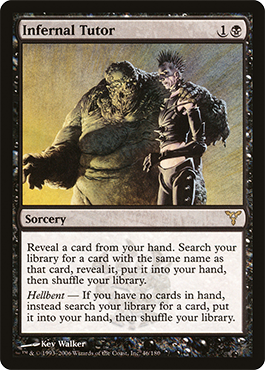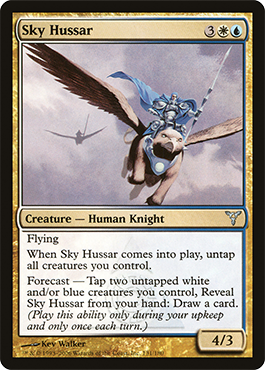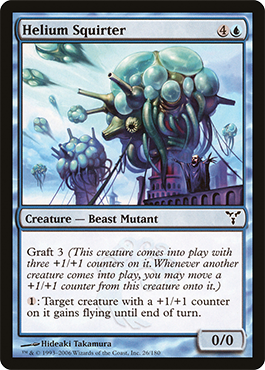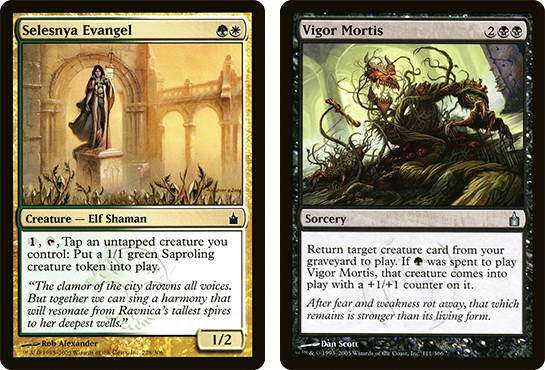Ravnica Remastered releases on January 12th, 2024. It’s a set filled with awesome reprints from our various trips to the plane. Apart from Dominaria, Ravnica is the plane that we have visited the most frequently. In fact, the next Standard-release Magic set, Murders at Karlov Manor is a Ravnica set too!
We visit the plane regularly because it is the most popular plane in all of Magic, so you can’t really blame Wizards of the Coast for going back to the well so often.
That begs the question, though: Why do Magic players love Ravnica so much?
To start to answer that question we have to go back to the original release of Ravnica: City of Guilds, which was released on October 7th, 2005.
The Fourth Stage of Design Was a Game Changer – Literally
The original Ravnica block is what started it all and it marks a major moment in how Magic sets were designed.
In his State of Design article in 2011, Mark Rosewater divided Magic’s history into several stages of design, and he wrote that Ravnica began the Fourth Stage of design.
The Fourth Stage was marked by more detailed planning for an entire block. A block was a sequence of sets released one after another that were interconnected both mechanically and flavorfully. In other words, when they were planning what Ravnica: City of Guilds would look like, they were also looking ahead to Guildpact and Dissension.
This brought their worldbuilding to another level and allowed for incredibly cohesive design across all three sets. This resulted in major benefits when it comes to lore and gameplay. Perhaps most importantly, it allowed them to really flesh out what each of the plane’s factions would be like, which in turn also resulted in one of the best Limited formats of all time.
The Lore
The entire plane of Ravnica is a cityscape. The plane is dominated by factions that have very different philosophies. Long before our first visit to the plane, it was being dominated by warfare between these factions.
Ultimately, this conflict was ended by the creation of the Guildpact. This gave each of these factions a purpose on the plane, with a promise that none of the other guilds would encroach on their territory.
So, they crafted a fascinating plane unlike anything we had ever seen in Magic. If it ended there, though, it wouldn’t be enough for Ravnica to be one of the game’s most popular planes. Each of these guilds has a unique identity and the way that card design reflects these identities is what allowed Ravnica to stand so far above the sets that came before it.
The First Successful Faction Designs
Ravnica was not the first Magic set to feature factions based on color identity. But it did mark the first time this was done successfully. Mirage Block and Invasion Block both made attempts at establishing three-color factions.
These factions certainly received some cool cards, like Invasion’s “Master” cycle. But most Magic players then and now would be unable to tell you what the flavor of “Sunscape” or “Thornscape” was.
They did an incredible job of this in Ravnica. Even if you’re not someone who reads all of the Magic backstory, the way they designed factions cards in Ravnica tells a story all on its own. You’d be hard-pressed to find anyone that doesn’t have a good idea of what each of the guilds of Ravnica is all about. Even players who don’t ever read the Magic backstory know exactly what each of these guilds stand for.
This is because they communicated this quite effectively on the cards themselves. One of the biggest innovations of Ravnica: City of Guilds was the use of watermarks. If you’re uncertain what guild a particular card is associated with, you can simply look in the text box and find that guild’s insignia. The design of these insignia themselves is another great flourish that adds to the flavor of these cards.
However, I think the most effective way of conveying the identity of each of these guilds to the player base as a whole was giving each guild their own mechanic. These mechanical differences go a long way towards conveying the flavor differences between each guild too. Each of these mechanics lets you really feel like you’re part of the guild, since you’re doing something that so effectively represents them.
The Golgari Swarm (Black-Green) got Dredge, which lets you return cards (often creatures) from your graveyard to your hand. This embodies their focus on both life and death.
The Selesnya Conclave (Green-White) got Convoke, which lets you tap your creatures to help you pay for spells. This means the Selesnya are all about unity and working together.
The Boros Legion (Red-White) got Radiance, which makes your spell affect creatures that share a color. It’s no surprise that the Boros are all about maintaining order through a shared sense of pride and zealousness.
The House Dimir got Transmute (Blue-Black). It lets you pay a cost and discard a card from your hand to tutor up a card with the same cost. The sneakiest guild on the plane of Ravnica, the Dimir are good at manipulation, so it makes sense that they can easily turn one card into a completely different one.
The Izzet League got Replicate (Blue-Red), which allows you to pay a cost to copy your spells. The Izzet are all about using their creativity and magic to reshape the plane of Ravnica on a large scale, something Replicate allows you to experience.
The Orzhov Syndicate (Black-White) got Haunt, which allows your fallen creatures to attach themselves to another creature. Then, when that creature dies you get some type of effect. It comes as no surprise then, that the Orzhov are persistent debt collectors who refuse to leave you alone. Even after death!
The Cult of Rakdos (Black-Red) got Hellbent, which makes your cards better when you have an empty hand. The Rakdos are all about having a good time no matter the consequences. In Magic you know you’ve had a really good time when you’ve consumed all the cards in your hand.
The Azorius Senate (Blue-White) got Forecast, which allows you to pay a cost and reveal a card in your hand for an effect. They are the politicians of Ravnica, and they like to think that their fastidiousness allows them to take preemptive action to maintain order on Ravnica.
The Gruul Clans (Red-Green) got Bloodthirst, which makes your creatures better if you cast them on a turn when your opponent has been damaged. The least organized of all the plane’s guilds, the Gruul are all about destruction and raiding. So, it makes perfect sense that Gruul cards get better the more effectively you have attacked on a given turn.
The Simic Combine (Blue-Green) got Graft, which allows a creature to move one of its +1/+1 counters to another creature when it enters the battlefield. The Simic use their creativity to alter life itself. Every time you decide to use Graft, you’re doing exactly that.
These mechanics gave each of these guilds a very clear sense of identity. In fact, each of these guilds is so well established that the names for each of these two-color combinations are used for any deck that utilizes that guild’s two colors.
Every time we’ve returned to Ravnica, this model has been followed with each guild getting their own mechanic.
A Cohesive Limited Format
The attention to detail that characterized Magic’s “Fourth Stage of Design” also resulted in a Limited format that was different from what came before it. Before Ravnica: City of Guilds there weren’t really Limited archetypes as we think of them today.
These days, we expect there to be at least one signpost Uncommon in each color pair, and plenty of payoffs in those colors. In other words, most Limited formats today involve you trying to build around some type of synergy.
Before Ravnica, most Limited decks were what we would call “Good Stuff” decks today. In other words, there wasn’t much in the way of synergy. Because the sets in Ravnica Block were focused on the guilds, it was the first format to really feature Limited archetypes as we think of them today. After all, as I noted above, each guild has its own mechanic.
In addition to that, each guild received plenty of synergy pieces at lower rarities.For example, Selesnya Evangel helps you go wide so that you can abuse Convoke in your Selesnya deck, and Vigor Mortis lets you reanimate something from your well-stocked graveyard in your Golgari deck.
So, we’ve established the most popular aspect of Ravnica was its well-developed factions which resulted in a world that felt real and a great Limited format. But, that still begs the question…
Why Do Players Like Factions?
While players really enjoy synergy and flavor, something that Ravnica sets have no shortage of, there’s another more visceral reason we like factions. Humans love having things we can point to that we feel reflect who we are. This is the reason that horoscopes and Meyers-Briggs personality types are so popular in the mainstream.
Various Zodiac signs have been popular since the beginning of civilization over 5,000 years ago, too. So it isn’t just a passing fad. We’ve virtually always been interested in using these types of markers to help us define ourselves.
Our personalities are incredibly complicated, but it feels really nice to be able to sum up who we are with a single simplified statement. In many circles you can just say “I’m a Virgo” or “I’m ISTJ” and they can learn about who you are.
In other words, factions in Magic are popular for the same reasons horoscopes and Meyers-Briggs personality profiles are. The presence of 10 separate factions is naturally going to lead to Magic players identifying with one of those more than others. If you’re in Magic circles and you say “I’m a Boros,” people generally know that means you’re both passionate and organized.
Factions After Ravnica
The use of watermarks and faction mechanics has also been used in sets like Shards of Alara, Khans of Tarkir, Strixhaven and Streets of New Capenna. It’s no surprise that those sets are also beloved for their well fleshed-out factions.
Our return trips to Ravnica have also gone back to the well, using the same principles of faction design to give us great stories, Limited formats, and flavor.
End Step
So, that’s why I think Ravnica sets are so popular!
Do you think there’s something I’m overlooking? Let me know over on X!

Jacob has been playing Magic for the better part of 24 years, and he especially loves playing Magic’s Limited formats. He also holds a PhD in history from the University of Oklahoma. In 2015, he started his YouTube channel, “Nizzahon Magic,” where he combines his interests with many videos covering Magic’s competitive history. When he’s not playing Magic or making Magic content, he can be found teaching college-level history courses or caring for a menagerie of pets with his wife.

